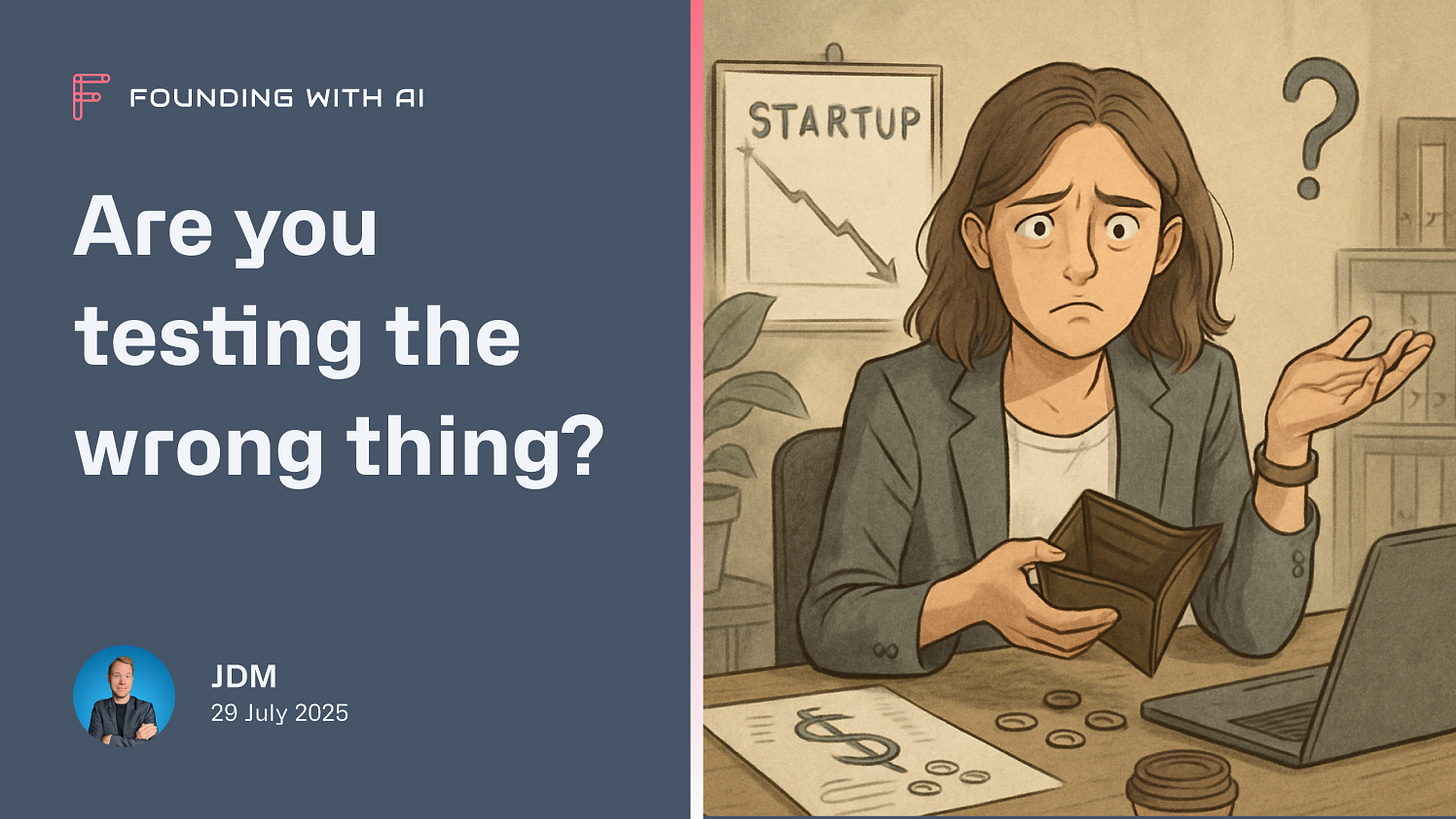Are you testing the wrong thing?
There’s always one assumption holding your startup hostage. Here’s how to find it — and use AI to break it wide open. (Part 1 of the Traction Science Series)
Hey friends 👋
Most founders don’t fail because they move too slow —
They fail because they move in the wrong direction, fast.
They test the easy stuff. They chase shiny distractions.
And when they inevitably hit a wall?
Turns out they never questioned the one assumption most likely to kill them.
Today, we’re fixing that.
This is the first issue in the Traction Science Series — a practical, prompt-powered guide on how to think like a scientist, test like a founder, and learn what the market actually wants — faster.
We’re kicking things off at the only logical place:
What the hell should you even be testing?
Let’s go 👇
What’s a risky assumption, anyway?
A risky assumption is something you’re treating as true — but haven’t actually proven.
It’s the part of your plan that sounds good in your head, works great in your pitch deck, but could totally fall apart the second it hits the real world.
Some common examples:
“Busy parents will pay $15/month for this.”
“We can reach them through Instagram ads.”
“They’ll trust our AI to do the hard part.”
There’s nothing wrong with assumptions — they’re how we get started, and they make a great to-do list for what needs to be proven.
But not all assumptions are equally risky.
The ones worth worrying about are the ones:
You have the least amount of evidence for, AND
That will cause the most damage if they turn out false
That combo is your startup’s weak point — the proverbial Jenga piece that topples the whole thing if it slips.
And unless you find it early, you’ll spend the next six months validating the safe stuff while the fatal flaw stays buried under good vibes and busywork.
Let’s not do that.
Why founders get this wrong
Founders screw this up all the time — not because they’re lazy, but because they’re human.
We crave progress. We chase momentum.
And we’re wired to avoid the stuff that might prove we’re wrong.
So instead of testing what’s risky, we test what’s easy:
We mistake interest for intent: “People say they want this.”
(Cool. Ask them to pony up the dough and watch what happens.)
We hide behind busywork: “Let’s build the landing page first.”
(Because nothing says traction like a two-week Webflow spiral.)
We go wide instead of deep: “Let’s run a survey!”
(A dozen vague questions and zero actionable insights.)
We prioritize motion over meaning: “Let’s get it out there and see what happens.”
(Spoiler: usually nothing.)
It feels like progress. It even looks like progress.
But it’s not learning. It’s avoidance — driven by unprocessed fear.
I call it “procrastivity” — and it kills startups slowly.
So before we test anything, let’s get clear on what needs testing.
Let’s use AI to rip your idea apart — before the market does.
Prompt #1: Surface the assumptions
Every startup idea is built on a pile of assumptions. A house of cards.
Some are obvious. Some are hidden. Some are so deeply baked into your thinking you don’t even notice them anymore.
That’s why we need a second brain — one that’s fast, objective, and never gets high on your own supply.
Enter your AI co-founder.
Your goal here is to drag those assumptions into the light — so you can stop treating guesses like facts.
What to do
Tell ChatGPT (or Claude, or Gemini, or whatever you like) what you’re building and who it’s for. Then ask it to list the assumptions you’re making across three core areas:
Desirability — Are you solving an urgent problem with a willing buyer?
Distribution — Can you reliably reach them?
Monetization — Can you capture sufficient value in return?
The prompt
Paste this into your LLM of choice, along with your Startup Core.
(Or just give ChatGPT a quick audio pitch — it’s shockingly good at translating rambles into structure.)
Keep reading with a 7-day free trial
Subscribe to Founding with AI to keep reading this post and get 7 days of free access to the full post archives.


